This is part of a series on the Women’s Collegiate Championships
The Women’s Collegiate Golf Tournament ran by the Tripartite Committee began to really hit its stride in early 1960s. A new set of processes and even a detailed handbook was generated, smoothing out the selection of new host(ess) schools all across the country. More than ever the championship was feeling truly national. Even as the scenery and competitors changed, one of the constants during this time was the Arizona State Sun Devils who won the two-player team title an unprecedented 7 straight times from 1959-65. Among their contingent was one of the biggest stars in all of women’s amateur golf during this time: the 1960 intercollegiate champion, JoAnne Gunderson, who dominated the sport in a way that has only been replicated by Tiger Woods.

*NOTE 1: underlined text provides a link to references or sites with more information
*NOTE 2: we have done our best to cull out sources that contain problematic language or sentiments, but sometimes those things cannot be helped or are otherwise included to illustrate a point; we hope you understand this usage and recognize its educational purpose is not an endorsement
JOANNE “THE GREAT GUNDY” GUNDERSON (CARNER)
BEFORE ARIZONA STATE
Even before reaching college, JoAnne Gunderson had earned a resume that would satisfy many for their entire amateur career. She won the Women’s Western Junior Amateur in 1955. That same year, she was runner-up in the US Girls Junior Championship, an event she came back to win in 1956. A short time after that she reached the 1956 US Women’s Amateur finals where she lost to Marlene Stewart. That experience served her well, returning the following year to win the 1957 US Women’s Am shortly before entering Arizona State.
FIRST WOMAN TO GET A SCHOLARSHIP
JoAnne is believed to possibly be the first woman in the United States to get a golf scholarship. While there are several news reports confirming JoAnne’s scholarship to ASU, there is nothing that explicitly states it a was a golf scholarship. Why? Because the USGA was still in the midst of their ban on athletic scholarships, something that had already resulted in a brief revocation of the amateur status of the 1953 North Texas State men’s team (then 4-time reigning NCAA champs and just a few months away from attempting to defend their title). The specific language against “Proselyting and Athletic Scholarships” was still in the USGA handbook at the time Gunderson entered ASU, so her scholarship couldn’t be as a direct result of her golf skill/reputation and instead had to be the same kind offered to any other student. It was a fine but important distinction.
THE LEGEND
Gunderson’s career trajectory was stunning. She represented the United States in the Curtis Cup in 1958 and 1960 while at school, and then again in 1962 and 1964. She won the Women’s Western Amateur in 1959. Just a few weeks before the 1960 Women’s Collegiate Championship, she reached the semifinals of the Women’s British Amateur. She is the only woman to win the US Girl’s Junior Am (1956), US. Women’s Am (1957, 1960, 1962, 1966, 1968), and US Women’s Open (1971 & 1976); Tiger Woods is the only man to win the equivalent on the men’s side. Furthermore, those victories made her the first golfer ever - woman or man - to win three different USGA championships. Her 41-hole match against Marlene Stewart Streit in the 1966 US Women’s Am is still the record longest finals match in that event’s long storied history. In 1969, her final year as an amateur, Gunderson won an LPGA Tour event; it wasn’t until 2012 that another amateur - 15 year old Lydia Ko - would win on the LPGA Tour.
JoAnne (Gunderson) Carner, was also incredibly successful as a pro golfer, winning over 40 LPGA Tour events and becoming the second player on that tour to cross the $1 million mark in earnings. She was inducted in both the LPGA Tour (1982) and World Golf (1985) Halls of Fame, and yet her stunningly long playing career was far from over. When she made the cut at the 2021 US Women’s Senior Open at the age of 82, Carner became the oldest golfer to play in a USGA championship (and likewise the oldest to make the cut). It simply cannot be overstated how big of an impact JoAnne - or “Big Mama” as she has been known for the last 5+ decades - has had on the game of golf, including as a collegiate superstar at Arizona State.
Hear more about her amazing career from the woman herself in this wonderful series from FORE the Good of the Game podcast:
THE TOURNAMENT [June 20-24, 1960]
In 1948, Stanford became the first Western school to host the men’s NCAA golf championship. In 1960, history repeated when Stanford hosted the 16th iteration of the Women’s Collegiate Golf Tournament.
STROKE PLAY
INDIVIDUAL RESULTS
Par for Stanford’s course at this tournament was 77 (39-38). Not only did the favorite break it, she posted a new tournament record. JoAnne Gunderson’s six-under-par 71 (36-35) matched Kathy McKinnon’s [Florida Southern] 1953 score but bettered the score-to-par record by a stroke. Gundy’s teammate, Sherry Wheeler, also bettered par (76) but was two strokes behind Kansas’s Karen Schull. Because the reigning champ, Judy Eller [Miami], exercised her option to not qualify and get automatic placement into match play, there was a 2-for-1 playoff for the final spot. Nancy Young [Stanford] and Judy Hoetmer [Washington] (next year’s champion) both shot respectable 84s (+7) in qualifying, but the former used her home course knowledge to win the playoff on the first hole.
After blistering the course, Gundy was quoted by the local Peninsula Time Tribune saying, “The Stanford course is a true test of golf.” Eller agreed and added the prophetic words, “It will take a person who can hit a ball long and straight to win.” Amidst the great play was a few spots of difficulty. One of the competitors near the bottom of the leaderboard scored an 18 on the 5th hole (+14), which was noted as possibly being the tournament record for the most strokes taken on a single hole.
TEAM RESULTS
Once again, the team results weren’t clearly spelled out by any of the newspapers coving the event, including the local paper that seemed to capture nearly all other details of the week. Even so, Arizona State clearly won the day with their two top scores both breaking par. In her 1969 Master’s thesis on the history of the tournament, Margo Lynn Anderson credited Arizona State as the team victor, making them the first (official) repeat winners in a decade. Likewise, the Arizona State yearbook mentions the streak, creating a second source to safely conclude that the team titles were being awarded. Taking the top two scores from each team, the leaderboard looks something like this:
Arizona State (147, a new tournament record at -7)
Kansas (153)
Stanford (165)
Purdue (169)
Washington (174)
San Jose State (189)
Odessa (208)
MATCH PLAY
The Finals coming down to the two Curtis Cup stars and heavy favorites felt inevitable, but that does not mean there wasn’t any drama along the way. Right out of the gate, Gunderson nearly lost her first match but was able to right the ship late in the closing holes and eek out a 2&1 victory. Eller’s close call came in the Semifinals against Jean Ashley [Kansas] where a 12-footer on the 19th hole was needed to keep Eller’s hopes of repeating alive.
Gunderson and Eller were close friends and played in many tournaments together over the years, including as teammates at the recent Curtis Cup. Even as often as they had played together, they were said to have not met in any competition finals since 1957 when Gundy bested Eller in 20 holes at the US Women’s Amateur. That same year, Eller won the US Girl’s Junior Championship, an event she won the next year as well, making her the first two-time winner in the event’s history. Now, she was looking to become the first two-time collegiate champ too. In one of those funny coincidences, this championship Finals match again went 20 holes and again it was Gunderson who came out on top. The par 5 second hole was a fitting place to end the match as Gunderson’s long straight drive and approach shot got her on the green in two while Eller took four shots to reach the same spot, proving the latter’s words from the start of the tournament to be the deciding factor.
In winning a collegiate individual championship, Gunderson became the second woman to pair that title with the US Girl’s Junior Amateur and US Women’s Amateur; Pat Lesser [Seattle] having achieved the feat with her intercollegiate win in 1955. For this win along with the Tucker Intercollegiate, Gunderson became the first female golf All-American at ASU.
THE GLADYS PALMER TROPHY
The very first Tripartite Committee Report in 1956 suggested that a rotating trophy named after Gladys Palmer - Ohio State University faculty member who was one of the biggest reasons that the tournament was started and continued after WWII - replace the existing rotating trophy awarded to the intercollegiate champion each year. This suggestion was apparently first suggested by Ethel Martus, Palmer’s counterpart at UNCG who oversaw the tournament in 1953-54, who wanted to recognize Palmer’s legacy and philosophy. Others agreed and a fund was quickly established to accept donations for a suitable trophy. The 12” silver Revere-style bowl (which is not unlike the Chick Evans Bowl awarded to the men’s NCAA individual champion at the time) was purchased by the Tripartite Committee following the 1957 championship and awarded to Carol Pushing [Carleton College] in 1958. As the 1960 champion, JoAnne Gunderson was the third woman to etch her name into the prestigious trophy.
After the OSU Rotating Trophy was replaced by the Palmer Trophy, it was given the place of honor as a display at each of the tournaments starting in 1958. The official handbook (as of 1962) stated clear instructions for the host school:
Because of its historical significance and interest, the OSU Trophy shall be on display at each Tournament then shipped to the next hostess school, where it shall be kept on display for the following year.
Eventually it was fully retired and placed in the Office of University Recreation and Intramural Sports at The Ohio State University. Its current whereabouts are unknown to this author, but believed to still reside at OSU.
THE (FIRST) SUN DEVIL DYNASTY

TEAM CHAMPS [1959-65]
Arizona State started their run of dominance with the 1959 championship, hosted by UNC at nearby Finley GC. ASU had a 2-player total of 159 to lead the 15 team field, with Miami FL (160) and Texas (163) rounding out the top 3. The reigning team champ Kansas, came in 4th with 167. Both ASU teammates suffered first round losses in the individual match play portion, JoAnne Gunderson defeated by UNC’s Kitty McKenzie and Sherry Wheeler defeated by Anne Quast [Stanford], reigning US Women’s Amateur champ.
The 1961 championship was hosted by Michigan at their home course. The winds played havoc during qualifying, but ASU was able to retain their team title with a combined 163. As the defending champ, JoAnne Gunderson was not required to play in the qualifying round, but she did so in order to go for the team three-peat. Her teammate Sherry Wheeler tied the 1959 champ (and 1960 runner-up) Judy Eller [Miami] for medalist honors at 79, but won the honor outright in a one-hole playoff. Gunderson and another teammate, freshman Susan Meerdink, made the Semifinals, but were both defeated.
The 1962 championship was hosted by New Mexico at their home course. ASU had a total of 151, New Mexico had 157, Purdue had 158, Penn State had 164, and Oregon State had 168 on the back of June Robinson’s medalist score of 71 which was one stroke short of JoAnne Gunderson’s course record (1959 Tucker Intercollegiate). Again ASU’s Meerdink made a deep run, but it was freshman sensation Carol Sorenson who came out on top and earned Arizona State its second collegiate individual championship. More info on that below.
The 1963 championship was hosted by Penn State. ASU became the first team to earn five official tournament championships with a total of 160. Winthrop College and Rollins tied for the runner-up position with 173s. Reigning champ Carol Sorenson was defeated in the early rounds by eventual champ Claudia Lindor who also defeated ASU’s lowest-scoring qualifier (79, one stroke outside medalist honors) Mary Lowell in the Quarterfinals.
The 1964 championship was hosted by Michigan State and played at the short but difficult Forest Akers course. ASU again took the team title with Sorenson (78) and Lowell (79) totaling 157. Tennessee finished runner-up (162) thanks in part to Ann Baker who made headlines that year by earning a spot on the men’s squad and becoming the first female athlete/letter winner/and athletics scholarship earner at the school. The NCAA passed a rule the next year which forbade women playing in men’s athletics, which is a significant milestone moment in the eventual path towards NCAA women’s athletics that we’ll cover in the future. Unfortunately, the four ASU qualifiers were again ousted in early matches.
The 1965 championship hosted by Florida at their University golf course. ASU easily extended their team title run with 3 of the top 4 medalist scores. Sorenson took medalist honors with a 75 (+2) and her teammate Nicki Nordstrom was runner-up with 77, for a 152 team total. The reigning champ Patti Shook [Valparaiso] elected not to participate in the stroke play portion since she automatically qualified for match play, but her practice round 73 would have earned her medalist honors. Sorenson made it to the semifinals, but was defeated by Rhonda Glenn [Palm Beach Junior College].
One of the members of the 1965 team was none other than future ASU legend, and Women’s Golf Coaches Association AND LPGA Hall of Fame inductee, Linda Vollstedt. She and JoAnne (Gunderson) Carner share the honor of being one of the select few golfers to be inducted into the International Women’s Sports Hall of Fame.
THE HANLEY TROPHY
Violet “Vi” Hanley, otherwise known fondly as Mrs. Stewart Hanley, was an incredible supporter of women’s amateur golf. After picking up the game in her 30’s, Hanley became a successful player - winning the Michigan Women’s Amateur Championship four times between 1924 and 1934 - and golf instructor for women while in her role as a member of the Women’s Physical Education Department at the University of Michigan. Her interest in supporting female players led her to the Chairman position on the USGA’s Women’s Committee and even as the manager of the USA team (led by Glenna Collett) in the 1930 international matches against the British team, which was a precursor to the Curtis Cup inaugurated two years later.
In 1961, an anonymous donation was made to the Tripartite Committee with the goal to honor Hanley for her “service to golf at the University of Michigan and her participation in the first international team matches between England and the United States.” The Hanley Trophy, a 10” Revere-style bowl that resembled a smaller version of the Palmer Trophy, was awarded to the representative institution for the team championship starting in 1962. Due to Arizona State’s dominance during this time, the rotating trophy returned back to Tempe, Arizona, each of the first four years it was awarded from 1962-65.
Carol Sorenson [1962 Champ]
Carol Sorenson was Arizona State’s next intercollegiate champion, and she did not shy away from the legacy Gundy left. Sorenson won most of the same big amateur tournaments that JoAnne Gunderson did, including: Women’s Western Junior (1959), US Girl’s Junior Am (1960), and the Women’s Western Am (July, 1962). Although she didn’t win the US Women’s Am, she did win the British Women’s Am in 1964. The two were unable to play as teammates at Arizona State, but they did get to play together on the 1964 and 1966 Curtis Cup teams. Along with being the school’s second women’s intercollegiate golf champion, Sorenson also joined The Great Gunderson in becoming an All-American in 1962, her freshman year, after defeating the reigning collegiate champ (Judy Hoetmer, Washington) at the University of New Mexico’s infamously hot course.
Thanks for reading!
Up Next:
In the next post for this series, we will cover the return to Ohio State in 1966 to celebrate the silver anniversary of the tournament. It was a fitting place for (future) Buckeye legend Renee Powell to break barriers as the Ohio University team captain.




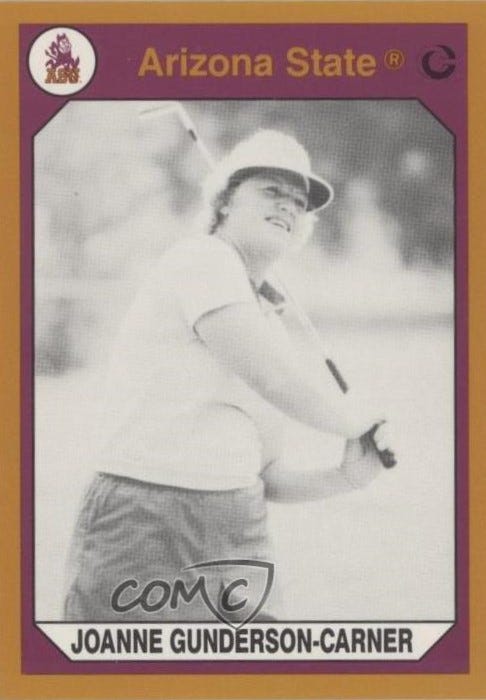






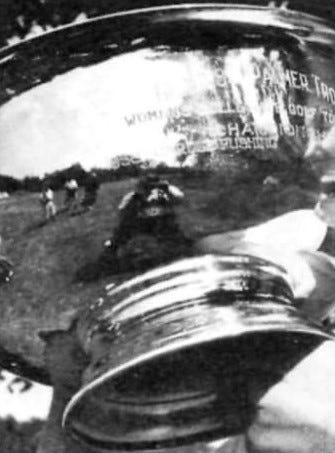

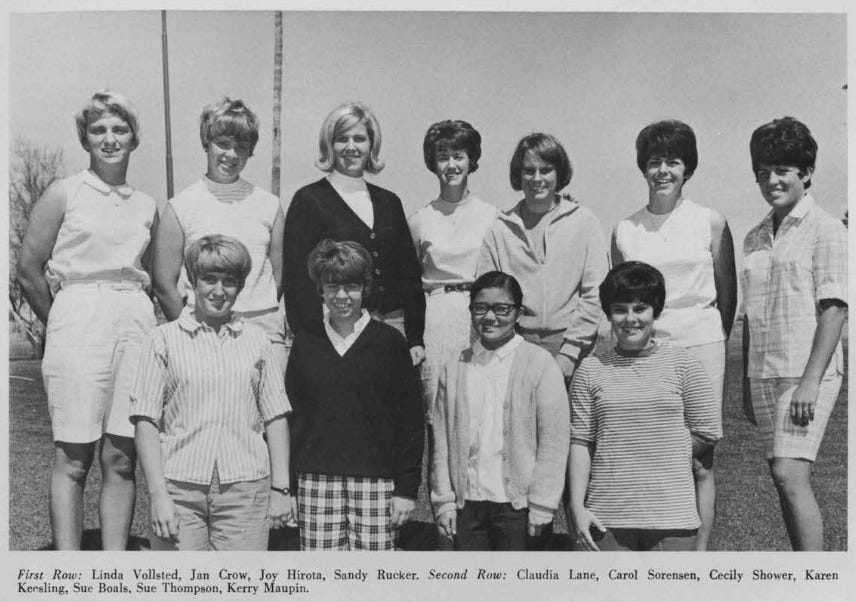
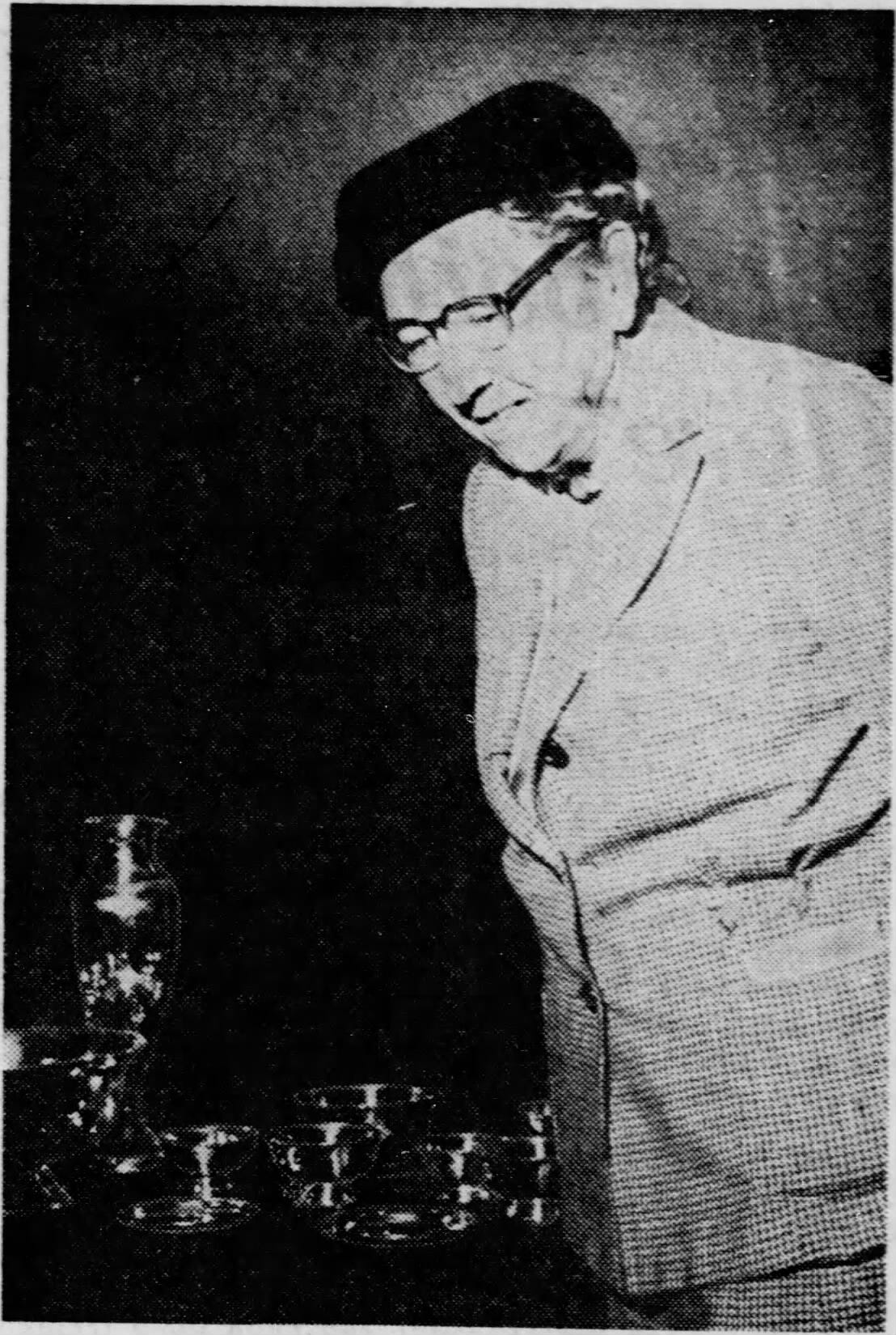

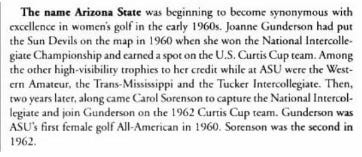
I love how you included other podcast on this, so cool!